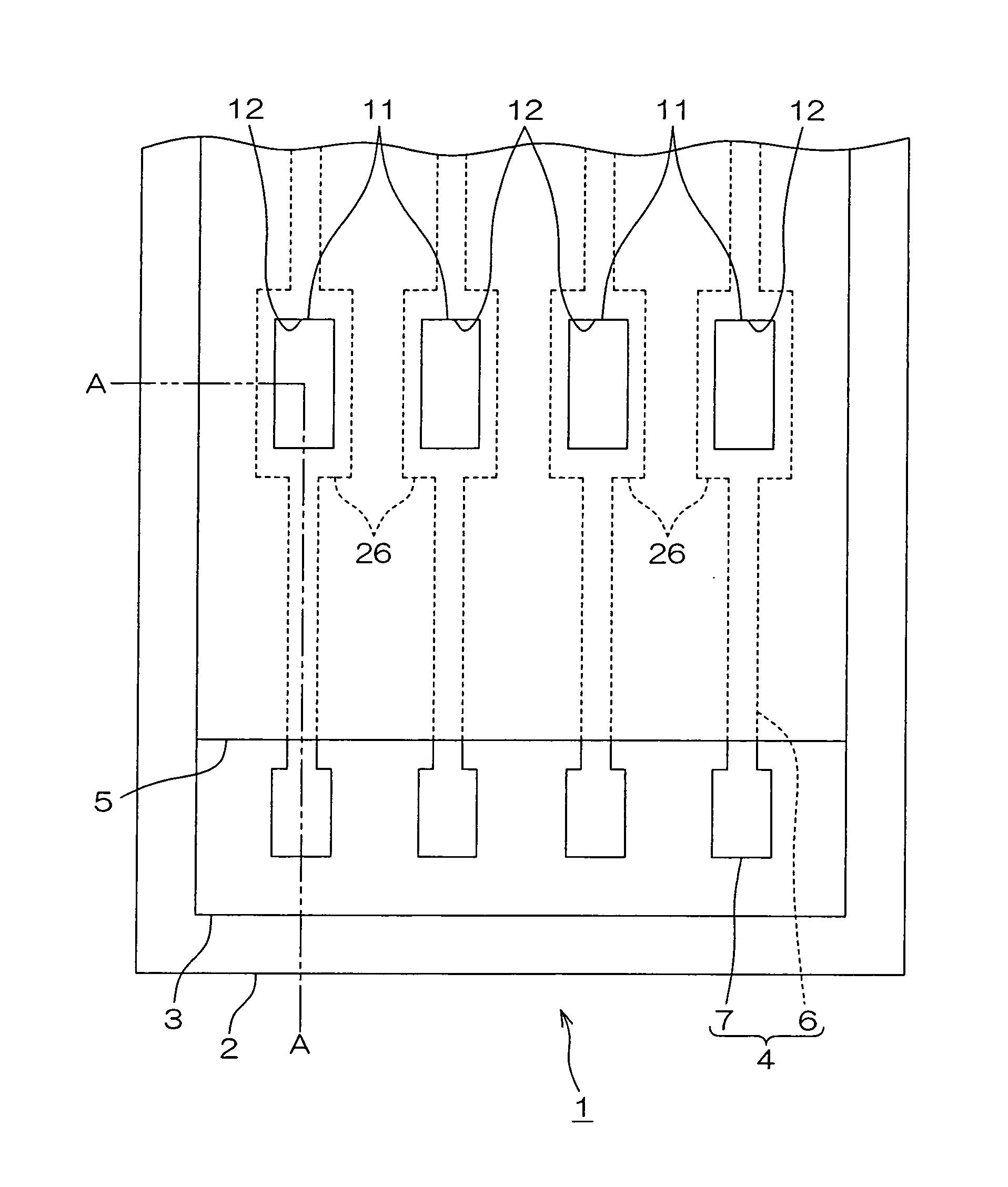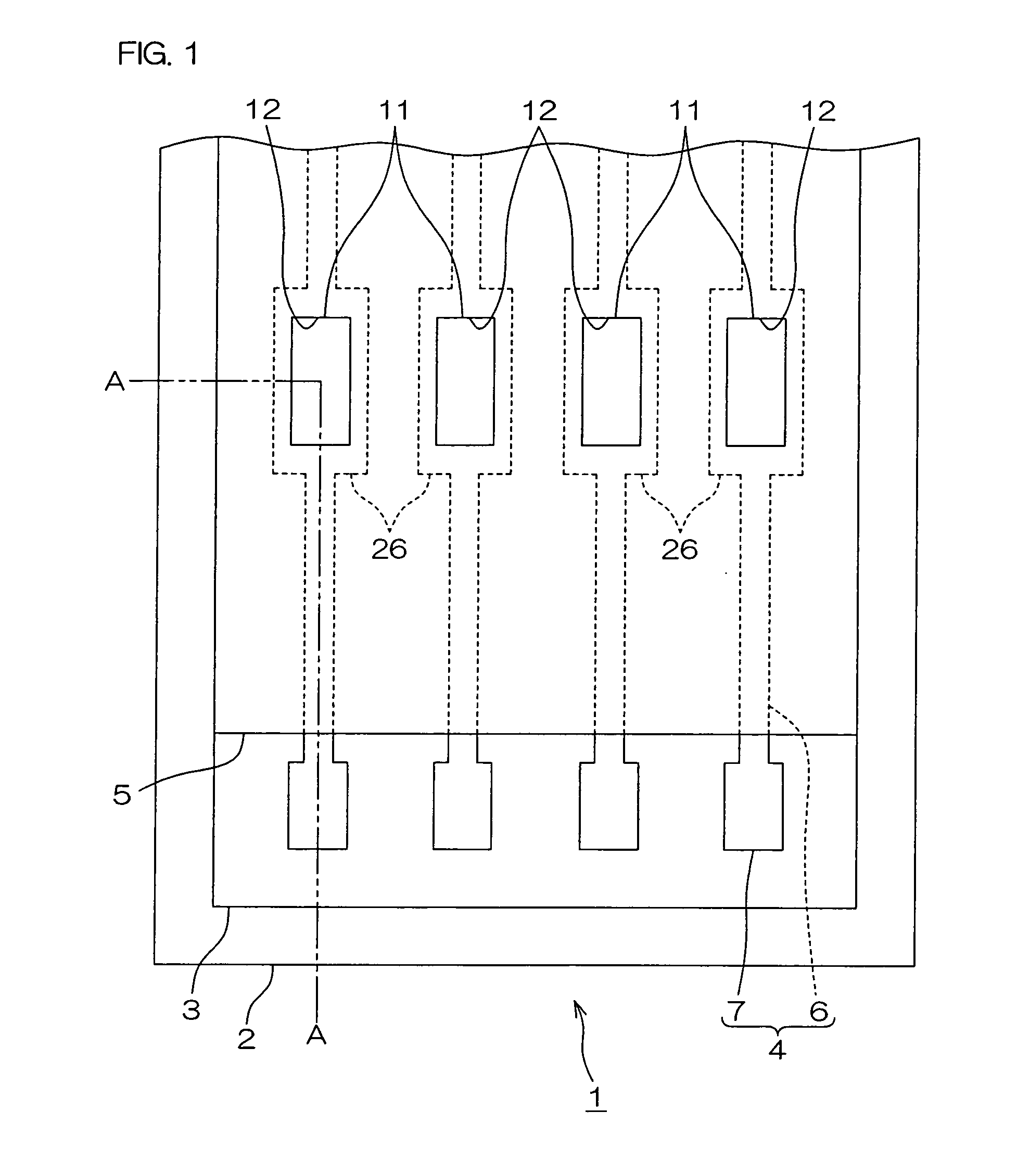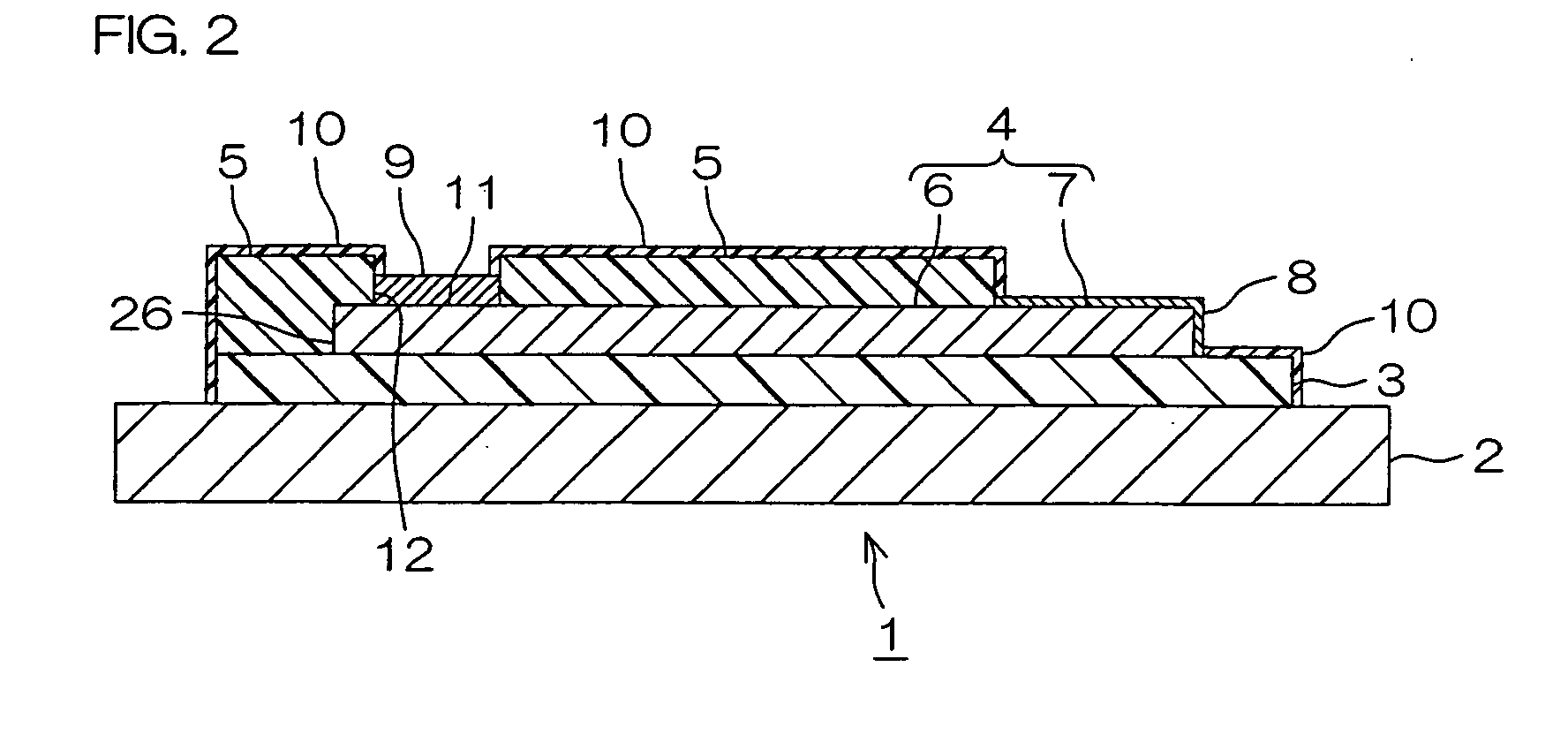Producing method of wired circuit board
a production method and wired circuit technology, applied in the direction of conductive pattern formation, non-metallic protective coating application, circuit electrostatic discharge protection, etc., can solve the problems of corrosion and discoloration of the terminal parts, and achieve the effect of efficient removal of static electricity
- Summary
- Abstract
- Description
- Claims
- Application Information
AI Technical Summary
Benefits of technology
Problems solved by technology
Method used
Image
Examples
example 1
[0168]A metal supporting board made of stainless steel having a thickness of 20 μm was prepared (see FIG. 3(a)).
[0169]Then, a varnish of a photosensitive polyamic acid resin was uniformly coated on the upper surface of the metal supporting board using a spin coater. Then, the coated varnish was heated at 90° C. for 15 minutes to form a base coating. Thereafter, the base coating was exposed to light at 700 mJ / cm2 via a photomask, heated at 190° C. for 10 minutes, and then developed using an alkaline developer. Subsequently, the base coating was cured at 385° C. under a reduced pressure of 1.33 Pa to form an insulating base layer made of polyimide in the foregoing pattern having a rectangular shape when viewed in plan view on the metal supporting board (see FIG. 3(b)). The thickness of the insulating base layer was 10 μm.
[0170]Then, a conductive pattern made of copper and having a thickness of 15 μm was formed in the foregoing pattern by an additive method (see FIG. 3(c)). The spacing...
example 2
[0179]A suspension board with circuit was obtained by performing the same process as in EXAMPLE 1 except that the suspension board with circuit was pinched by a stainless steel clip, instead of coating an eutectic solder of lead and tin and heating.
[0180]That is, the suspension board with circuit was pinched by the stainless steel clip such that the stainless steel clip was in contact with the exposed portions and the metal supporting board opposing the exposed portions (see FIG. 5(a)). The entire surface of the stainless steel clip is covered with a cover layer formed by nickel plating.
[0181]Then, the suspension board with circuit pinched by the stainless steel clip was dipped as it was in the polymerization solution of polyaniline, while the aqueous polymerization initiator solution was added thereto, so that the semiconductive layer was formed (see FIG. 5(b)).
[0182]Thereafter, the stainless steel clip was removed from the suspension board with circuit (see FIG. 5(c)).
PUM
| Property | Measurement | Unit |
|---|---|---|
| thickness | aaaaa | aaaaa |
| thickness | aaaaa | aaaaa |
| thickness | aaaaa | aaaaa |
Abstract
Description
Claims
Application Information
 Login to View More
Login to View More - R&D
- Intellectual Property
- Life Sciences
- Materials
- Tech Scout
- Unparalleled Data Quality
- Higher Quality Content
- 60% Fewer Hallucinations
Browse by: Latest US Patents, China's latest patents, Technical Efficacy Thesaurus, Application Domain, Technology Topic, Popular Technical Reports.
© 2025 PatSnap. All rights reserved.Legal|Privacy policy|Modern Slavery Act Transparency Statement|Sitemap|About US| Contact US: help@patsnap.com



